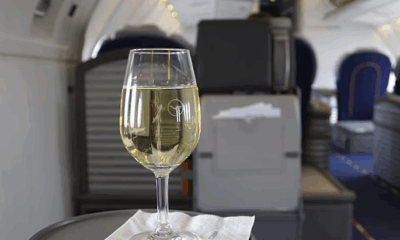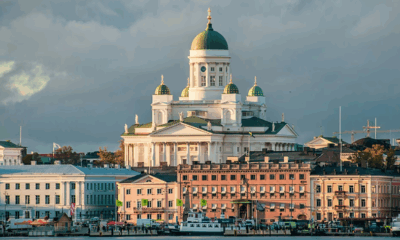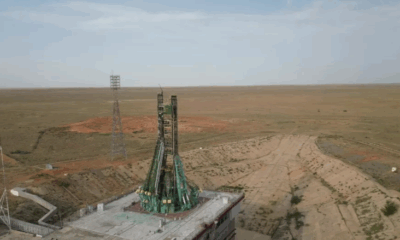Travel
Exploring the Great Lakes: A Road Trip from NYC to Chicago

A road trip from New York City to Chicago along the Great Lakes is an unforgettable adventure that combines scenic beauty, rich history, and vibrant urban experiences. As you journey from the East Coast to the Midwest, you’ll pass through charming small towns, visit cultural cities, and marvel at some of the country’s most stunning natural wonders.
From the breathtaking sight of Niagara Falls to the lakeside charm of Cleveland and the dynamic energy of Chicago, each stop offers a unique slice of American life. This route not only provides the freedom to explore at your own pace, but also delivers a perfect balance of outdoor adventure and city exploration, making it an ideal road trip for travelers seeking variety and excitement.
First Stop: Buffalo and Niagara Falls
Buffalo, just a few hours’ drive from New York City, is your first stop on the road to Chicago. Once known as a major industrial hub, Buffalo has undergone an impressive revitalization, becoming a vibrant city with a flourishing arts scene, delicious food, and stunning waterfront views along Lake Erie. The city’s architecture is a sight to behold, with beautiful art deco buildings and Frank Lloyd Wright’s masterpieces like the Darwin D. Martin House. Buffalo’s growing food scene is not to be missed—make sure to try its famous Buffalo wings at one of the many local eateries, or explore the diverse range of culinary options downtown.
Just a short drive from Buffalo, Niagara Falls awaits as one of the most iconic natural wonders in North America. The thundering waterfalls, located on the border of the United States and Canada, are a must-see stop on your road trip. You can explore the falls from the U.S. side by walking along Niagara Falls State Park, taking the Maid of the Mist boat tour to get up close to the base of the falls, or venturing into the Cave of the Winds for a thrilling walk beneath the cascades. For a different perspective, cross the border into Canada (don’t forget your passport!) for panoramic views of the falls and additional attractions like Journey Behind the Falls, where you can explore tunnels carved into the rock for an up-close look at the roaring water.
With its blend of city charm and natural splendor, Buffalo and Niagara Falls make for the perfect first stop on your Great Lakes road trip, setting the stage for more unforgettable adventures ahead.
Next Stop: Cleveland, Ohio
After leaving the iconic sights of Niagara Falls behind, your road trip continues to Cleveland, Ohio—a city rich in history and culture, nestled on the shores of Lake Erie. Cleveland, once an industrial powerhouse, has transformed itself into a vibrant destination that mixes old-world charm with modern attractions, making it an essential stop on your Great Lakes journey.
One of Cleveland’s key attractions is the Rock & Roll Hall of Fame, a must-visit for music lovers. Located right on Lake Erie’s waterfront, this iconic museum tells the story of rock music’s greatest legends through interactive exhibits, memorabilia, and rare artifacts. Whether you’re a fan of classic rock, punk, or modern-day hits, the Rock & Roll Hall of Fame offers an exciting deep dive into the history of this genre.
After soaking up some music history, take time to enjoy Cleveland’s beautiful waterfront. The Lake Erie shoreline offers scenic walks, peaceful parks, and stunning sunsets over the water. The nearby Cleveland Metroparks system features miles of hiking and biking trails, making it the perfect place to stretch your legs and enjoy the fresh air after a long drive.
Cleveland is also home to the famous West Side Market, one of the city’s oldest public markets, filled with local vendors offering everything from fresh produce to artisanal goods. It’s a great spot to grab a bite or pick up unique snacks for your road trip. From freshly baked bread to international delicacies, you’ll find something for every taste.
For art and history enthusiasts, Cleveland’s University Circle area is a cultural treasure trove. This neighborhood houses the Cleveland Museum of Art, which features a world-class collection of art spanning centuries and continents, and the Museum of Natural History, perfect for family-friendly fun. Spend a few hours exploring these renowned institutions before heading back on the road.
With its mix of lakeside beauty, rich history, and cultural attractions, Cleveland is a destination that adds depth and excitement to your Great Lakes road trip.
Stop in Toledo or Detroit, Michigan
As your road trip progresses westward, you have two exciting options for your next stop: Toledo or Detroit, each offering a distinct flavor of the Midwest. Whether you’re seeking small-town charm or a city brimming with industrial history and cultural revival, both destinations have something unique to offer road trippers.
Toledo, Ohio. If you’re in the mood for a more laid-back, small-town vibe, Toledo is a perfect choice. Situated along the Maumee River, Toledo offers a rich blend of history, culture, and nature. Its blossoming art scene is centered around the Toledo Museum of Art, which is renowned for its impressive glass collection and beautifully curated exhibits that span from classic to contemporary art. The Glass Pavilion, part of the museum, showcases glass-blowing demonstrations and houses one of the finest glass collections in the world.
Stroll through Toledo’s charming streets, visit the Toledo Botanical Garden, or take a break by the waterfront at International Park. For a quieter, artsy stopover on your road trip, Toledo delivers the perfect mix of culture and relaxation.
Detroit, Michigan. If you’re drawn to a vibrant city with a rich industrial history and a dynamic downtown, Detroit is a must-see. Known as the “Motor City,” Detroit has undergone a cultural rebirth in recent years, making it one of the most exciting urban destinations in the Midwest. A visit to Detroit offers an opportunity to explore its storied past while enjoying the city’s creative energy.
Start by diving into the heart of Detroit’s culture with a visit to the Detroit Institute of Arts, home to an extensive art collection, including Diego Rivera’s famous “Detroit Industry Murals,” a stunning tribute to the city’s industrial roots. Detroit’s museum district is packed with culture, so be sure to also check out the Charles H. Wright Museum of African American History for an insightful journey through African American culture and history.
For those fascinated by America’s automotive heritage, a visit to the Henry Ford Museum in nearby Dearborn is essential. This sprawling complex showcases the history of American innovation, with exhibits ranging from early cars and planes to the bus that Rosa Parks made famous. It’s an eye-opening experience for anyone interested in the impact of industry on American society.
Beyond the museums, Detroit’s downtown offers a lively scene with a mix of trendy restaurants, bars, and revitalized public spaces like Campus Martius Park. Don’t miss the chance to see the Detroit Riverwalk, a scenic waterfront promenade perfect for taking in the city skyline and the Detroit River.
Whether you choose the peaceful, art-filled streets of Toledo or the bustling, culture-packed vibe of Detroit, each city adds a distinct layer to your Great Lakes road trip. Both destinations offer a chance to experience the spirit of the Midwest, whether through its art, history, or modern-day revival.
Final Destination: Chicago, Illinois
As your Great Lakes road trip draws to a close, you’ll arrive at your final destination: Chicago, one of the most dynamic and iconic cities in the United States. Known for its stunning skyline, rich cultural history, and vibrant neighborhoods, Chicago offers the perfect blend of urban excitement and lakeside beauty, making it a fitting conclusion to your adventure.
One of the first must-see attractions in Chicago is Millennium Park, located in the heart of downtown. This sprawling public park is home to the famous Cloud Gate sculpture (affectionately called “The Bean”), as well as beautiful gardens, public art installations, and outdoor concert venues. It’s a perfect spot to take a stroll, relax by the fountains, or snap some photos of the city’s architectural wonders.
Next, head over to the Art Institute of Chicago, one of the premier art museums in the world. Housing an impressive collection that spans centuries and genres, the museum is particularly famous for its works by Monet, Van Gogh, and American masterpieces such as Grant Wood’s American Gothic. Art lovers could easily spend hours wandering through the museum’s vast galleries.
For a more lively experience, head to Navy Pier, Chicago’s beloved lakefront destination. Here, you’ll find attractions like the Centennial Wheel, a giant Ferris wheel offering stunning views of the city and Lake Michigan. Navy Pier also features shops, restaurants, theaters, and boat tours, making it a great place to spend the day or catch a sunset cruise along the lake.
Of course, no visit to Chicago would be complete without indulging in the city’s world-famous food. Chicago’s culinary scene is legendary, and you’ll want to try the classic deep-dish pizza from spots like Lou Malnati’s or Giordano’s. Thick, cheesy, and loaded with toppings, Chicago-style pizza is unlike any other. Don’t forget to sample a Chicago-style hot dog, topped with mustard, relish, onions, tomato, pickles, and sport peppers—just don’t ask for ketchup!
In addition to its food, Chicago is renowned for its architecture. Take a riverboat tour to get a unique perspective on the city’s towering skyscrapers, including the Willis Tower (formerly Sears Tower), and learn about the architectural innovations that helped shape the city’s skyline. Chicago’s blend of historic and modern buildings is a testament to its resilience and creativity, making it a paradise for architecture buffs.
As you conclude your journey, Chicago offers a mix of history, culture, and entertainment that leaves a lasting impression. Whether you’re marveling at the city’s stunning architecture, exploring its world-class museums, or indulging in its legendary food scene, Chicago stands as a grand finale to your unforgettable road trip along the Great Lakes.
Why Renting a Car Is Ideal for This Trip
A road trip from New York City to Chicago, especially one that traces the stunning Great Lakes, is the type of adventure that thrives on flexibility. Renting a car for this journey allows you to fully embrace the spontaneity that makes road trips so special. Without being tied to strict schedules, travelers can take scenic routes, make spontaneous detours, and explore hidden gems along the way. Whether it’s stopping at a charming small town, taking in the views from an off-the-beaten-path lookout, or extending your stay in a place that captures your heart, renting a car gives you the freedom to control your pace and itinerary.
A road trip like this one offers the kind of flexibility that only comes with having your own car. Renting a vehicle allows you to stop whenever you want, take scenic detours, and explore iconic landmarks like Niagara Falls or the cultural richness of Cleveland without the limitations of public transportation or guided tours. With a rental car, the journey becomes just as enjoyable as the destination.
Renting a Car with Drivo for Short-Term Travel
For a smooth, hassle-free experience, Drivo is an excellent car rental option for this type of trip. Whether you’re planning a weekend getaway or a longer cross-state road trip, Drivo offers flexibility and convenience to make your journey comfortable and enjoyable. Here are some of the benefits of renting with Drivo:
- Affordable Rates. Renting a car for a few days or even a week with Drivo is budget-friendly, making it a cost-effective choice for road trips. You get the flexibility of a personal vehicle without the long-term costs associated with car ownership.
- Variety of Vehicles. Drivo provides a wide range of vehicles to suit every traveler’s needs. Whether you want a compact car for fuel efficiency and city driving or a spacious SUV for extra luggage and comfort, Drivo has the perfect vehicle for your road trip.
- Convenient Pickup Locations. With multiple rental locations across New York City, Drivo makes it incredibly easy to pick up your car and start your adventure right away. No need to spend extra time navigating complex rental processes—you can hit the road as soon as you’re ready.
- No Long-Term Commitments. Renting a car with Drivo means you avoid the stress of car ownership. There’s no need to worry about maintenance, parking, insurance, or other long-term responsibilities. You simply enjoy your trip, return the car, and move on to your next adventure.
By choosing Drivo, you can focus on making the most of your road trip, enjoying the freedom and convenience that only comes with having your own vehicle. It’s the perfect solution for anyone looking to explore the Great Lakes and beyond, without the hassle of owning a car.
Embark on Your Great Lakes Adventure by Car
From the breathtaking beauty of Niagara Falls to the cultural richness of Cleveland, and the vibrant city life of Chicago, this road trip is packed with unforgettable experiences.

Along the way, you’ll discover charming small towns, scenic routes along the Great Lakes, and explore fascinating cities with unique histories. Whether you’re marveling at natural wonders, visiting iconic museums, or sampling local cuisines, every stop adds something special to your adventure.
Now is the perfect time to plan your own Great Lakes road trip. Renting a car gives you the freedom and flexibility to explore at your own pace, make spontaneous stops, and create a journey tailored to your interests. With Drivo, renting a car is easy, affordable, and hassle-free, making sure your adventure goes smoothly from start to finish. So, hit the road and start exploring the incredible sights that the Great Lakes have to offer!
Travel
Kazakhstan and Uzbekistan Strengthen Ties in Hospitality Sector at HORECA Expo 2025

The growing partnership between Kazakhstan and Uzbekistan’s hospitality sectors took center stage at the HORECA Expo Uzbekistan 2025 in Tashkent, where industry leaders discussed digital innovation, service culture, and cross-border cooperation shaping Central Asia’s fast-evolving tourism landscape.
The three-day event brought together restaurateurs, policymakers, and service professionals from across the region to exchange ideas on how technology and collaboration are redefining the modern hospitality industry. Representatives from both countries emphasized that digitalisation and shared training are transforming how hotels and restaurants operate, with regional cooperation now seen as key to sustained growth.
Kazakhstan focuses on digital transformation
Kazakhstan’s delegation, led by the Association of Restaurants of Kazakhstan, highlighted the country’s rapid progress in integrating digital tools into everyday operations. Established in 2016, the association now represents around 16,000 restaurants nationwide.
“We started by organizing culinary contests, and soon realized restaurateurs needed a dedicated platform to share experience,” said Irina Lebedeva, Financial Director of the Association. “Now, we’re focused on digitalisation — automating reservations, accounting, and even customer feedback through new technologies.”
Lebedeva noted that modern restaurants are about creating an emotional experience, not just serving food. “Guests come for impressions — the light, music, atmosphere,” she said. “Technology helps us maintain that consistency while giving managers more time to focus on quality rather than paperwork.”
Uzbekistan expands support for global reach
Uzbek officials outlined policies designed to help local entrepreneurs take their culinary ventures abroad. According to Shukhrat Isakulov, head of the Department for Tourism Development under the Ministry of Ecology, the government offers subsidies covering equipment, logistics, and even ingredient transport for restaurateurs opening businesses overseas.
“The programme runs until 2027 and supports those promoting Uzbek cuisine internationally,” Isakulov said. “We want Uzbek hospitality to be visible on the global stage.”
At home, Uzbekistan continues to invest in professional training and digital infrastructure to improve standards across hotels, restaurants, and transport services. Officials say the goal is to raise service quality across the entire tourism value chain.
Shared goals for a regional future
Delegates from both countries agreed that shared traditions and close geography make collaboration natural. With similar languages and a common service ethos rooted in warmth and personal connection, cooperation between Uzbek and Kazakh hospitality sectors is growing rapidly.
“We don’t have closed clubs or membership fees,” Lebedeva added. “If someone wants to learn and develop, the doors are open. Collaboration is what makes the industry stronger.”
Participants concluded that the future of Central Asia’s hospitality industry lies in mutual learning, digital innovation, and shared professional standards — ensuring growth that celebrates both unity and diversity across the region.
Travel
Air Canada Becomes First North American Airline to Offer Free Alcohol on All Flights
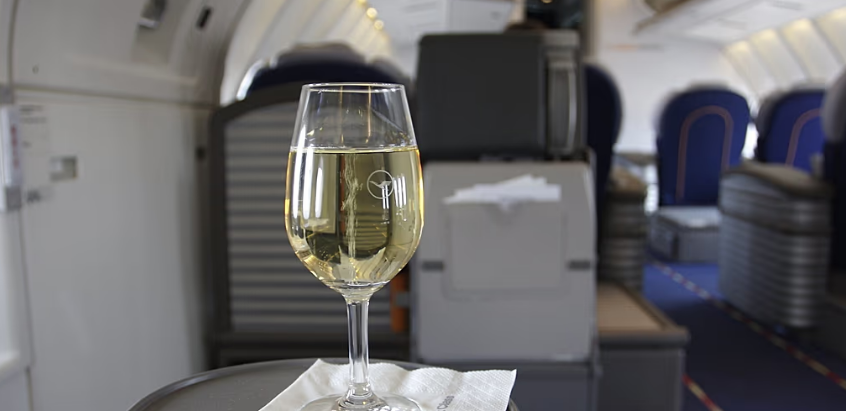
Air Canada has announced that economy-class passengers on all its flights will soon enjoy complimentary beer, wine, and snacks — making it the first North American legacy carrier to offer free alcoholic beverages across its entire network.
Beginning this autumn, travellers flying anywhere with the Montreal-based airline — whether on a short domestic route or a long-haul international journey — will receive free refreshments. The move places Air Canada ahead of its U.S. rivals American Airlines, Delta Air Lines, and United Airlines, which only offer complimentary alcohol on select long-haul services. Low-cost carriers such as Spirit, Frontier, and JetBlue continue to charge passengers for alcoholic drinks.
Scott O’Leary, Air Canada’s vice president of loyalty and product, said the initiative was driven by customer feedback and a desire to enhance the in-flight experience. “Food and beverage tend to have a disproportionate impact on customer satisfaction,” he told Reuters, noting that offering complimentary alcohol delivers more perceived value than other cost-cutting measures such as lowering baggage fees.
The new onboard service will also feature Canadian products, highlighting local brands. Morning flights will include oat bars from MadeGood, while passengers departing from Toronto’s Billy Bishop Airport will be offered ginger wellness shots from local producer Greenhouse after 10:30 a.m. Additionally, Air Canada will serve Heineken 0.0, becoming the only North American airline to offer non-alcoholic beer in-flight.
The decision underscores Air Canada’s strategy to differentiate itself at a time when passenger comfort and onboard service have become key competitive factors. However, not everyone in the aviation industry is celebrating. The growing issue of alcohol-fueled passenger misconduct has raised concerns about expanding in-flight drink service.
According to the International Air Transport Association (IATA), incidents involving unruly passengers have increased sharply in recent years, rising from one per 1,053 flights in 2017 to one per 480 flights in 2023. More than a quarter of these cases involved alcohol, often consumed before boarding.
Authorities in both North America and Europe have taken steps to address the problem. The U.S. Federal Aviation Administration’s “Zero-Tolerance Policy,” introduced in 2021, imposes fines of up to $37,000 for alcohol-related infractions, including consuming personal liquor onboard. In Europe, budget carrier Jet2 has restricted alcohol sales before 8 a.m., while Ryanair’s CEO has proposed a two-drink limit at airport bars.
Despite these concerns, Air Canada is betting that a well-managed complimentary drink program can improve customer satisfaction without compromising safety. The airline hopes its approach will encourage loyalty and position it as a premium choice for economy travellers — one where passengers can toast to a more comfortable flight, responsibly.
Travel
Helsinki Tops Global Ranking as World’s Most Sustainable Tourist Destination
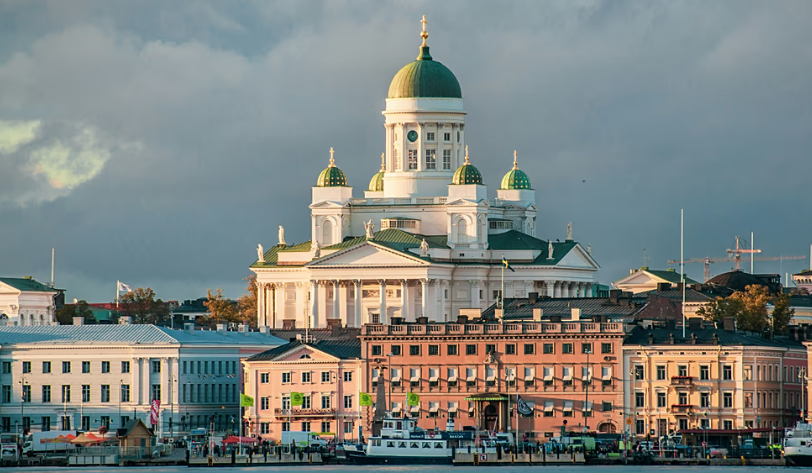
As overtourism sparks housing crises, strains infrastructure, and devastates ecosystems across the globe, a handful of cities are proving that sustainable tourism is possible. According to the 2025 Global Destination Sustainability (GDS) Index, Helsinki has once again been named the most sustainable tourist destination in the world.
The annual ranking evaluates more than 100 cities using 70 indicators across four key areas: destination management, supply chains, social sustainability, and environmental performance. These include metrics such as visitor management, airport emissions, safety, and commitments to climate action.
For the second consecutive year, the Finnish capital secured the top spot. “Helsinki continues to raise the bar by defining the ‘next practices’ of regenerative destination management,” said Guy Bigwood, CEO of the GDS-Movement. “Through bold climate action, pioneering sustainability strategies, and a steadfast commitment to transparency, the city demonstrates exceptional vision.”
Helsinki’s Sustainable Tourism Model
Helsinki’s winning strategy rests on years of coordinated projects designed to limit the environmental footprint of tourism while benefiting residents. The city actively measures the carbon impact of visitors, aligns its tourism development with its climate roadmap, and provides guidance to businesses on adopting green practices.
“Tourism in Helsinki is developed with all aspects of sustainability in mind,” said Nina Vesterinen, the city’s tourism director. “Our aim is for Helsinki to be a better place when a visitor leaves than it was before they arrived.”
Partnerships between municipal authorities and the private sector have been key. Nearly all of Helsinki’s larger hotels—99 percent of those with more than 50 rooms—are now environmentally certified, compared with far lower rates across Europe. Conference centers, tour operators, and transport providers are also increasingly gaining certification. Meanwhile, the city has invested in greener electricity and district heating to cut emissions across sectors.
Global Recognition and Tourist Demand
Earlier this year, Helsinki became the first city of over half a million residents to achieve the Green Destinations certification, one of the strictest benchmarks in sustainable tourism. The designation, endorsed by the Global Sustainable Tourism Council, highlights Helsinki’s work in protecting the environment, people, and cultural heritage.
The city’s efforts appear to resonate with travelers. Tourism in Helsinki is booming, with overnight stays by international visitors rising 19 percent in the first seven months of 2025 compared with the same period in 2024, according to Statistics Finland.
Industry-wide trends also suggest demand for responsible travel is increasing. A 2025 report by Booking.com found that 93 percent of travelers globally want to make more sustainable choices, with many already adjusting their habits to minimize harm to local communities and the environment.
Looking ahead, Helsinki’s challenge is to build on its achievements while tackling the climate impact of long-distance travel. “A large proportion of international tourists visiting the city arrive by boat or by air, the climate impacts of which we acknowledge,” Vesterinen noted. “Accordingly, we are aiming to attract more tourists from Finland and neighboring European regions.”
-

 Entertainment1 year ago
Entertainment1 year agoMeta Acquires Tilda Swinton VR Doc ‘Impulse: Playing With Reality’
-

 Business1 year ago
Business1 year agoSaudi Arabia’s Model for Sustainable Aviation Practices
-

 Business1 year ago
Business1 year agoRecent Developments in Small Business Taxes
-

 Home Improvement12 months ago
Home Improvement12 months agoEffective Drain Cleaning: A Key to a Healthy Plumbing System
-

 Politics1 year ago
Politics1 year agoWho was Ebrahim Raisi and his status in Iranian Politics?
-

 Business1 year ago
Business1 year agoCarrectly: Revolutionizing Car Care in Chicago
-

 Business1 year ago
Business1 year agoSaudi Arabia: Foreign Direct Investment Rises by 5.6% in Q1
-

 Sports1 year ago
Sports1 year agoKeely Hodgkinson Wins Britain’s First Athletics Gold at Paris Olympics in 800m



